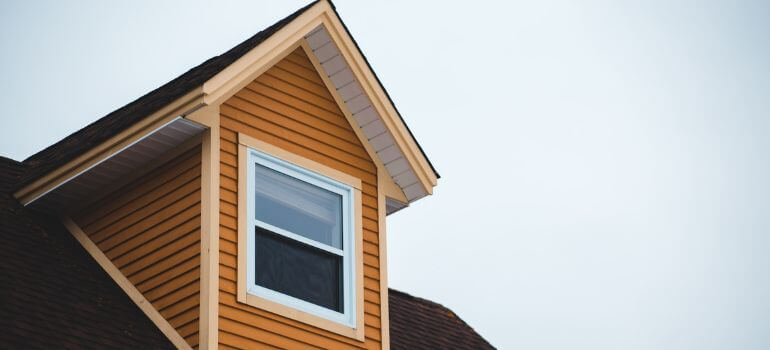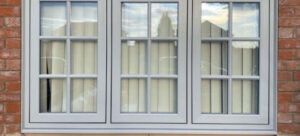Introduction: Understanding the Importance of Finding Studs Behind Siding
Finding studs behind siding is a crucial skill for homeowners, DIY enthusiasts, and professionals alike. Whether you’re mounting outdoor fixtures, doing renovations, or just ensuring the structural integrity of your home, knowing where the studs are located behind the siding is essential. This comprehensive guide will walk you through various methods and tools to locate studs effectively.
What are Studs?
Studs are the vertical supports in the wall’s frame, usually made of wood or metal, and are integral to the wall’s structure. They provide the support needed for mounting heavy objects and are essential for both construction and home improvement projects.
Types of Siding
Siding can be made from various materials, including wood, vinyl, aluminum, and fiber cement. Each type has its own properties that can affect how you find studs behind them. Understanding your siding type is the first step in determining the best approach to locate studs.
Tools Required
To find studs behind siding, you’ll need:
- A stud finder (electronic or magnetic)
- A drill (for test holes, if necessary)
- Safety equipment like gloves and goggles
- A ladder, if working on a higher area
Preparation Steps
Safety first: wear protective gear and ensure that the area you’re working in is safe. If you plan to drill, check for any underlying electrical wires or plumbing.
Finding Studs: Traditional Methods

When it comes to finding studs behind siding using traditional methods, it’s a blend of art and science. Before the advent of modern electronic and magnetic stud finders, these were the primary ways to locate studs. While they may not be as precise as their modern counterparts, these methods can still be useful in certain situations. Let’s explore some of these traditional techniques:
- Tapping Method: One of the oldest methods involves tapping on the wall and listening for the sound differences. When you tap over a hollow space, the sound will be more resonant and hollow. Over a stud, the sound will be duller and more solid. This method requires a good ear and some practice to differentiate the sounds.
- Visual Inspection: Sometimes, you can locate studs by visually inspecting the siding. Look for patterns or seams that might indicate where the siding was attached to studs. This method can be particularly effective with certain types of siding where the attachment points are more visible.
- Measuring from a Corner: In many structures, studs are placed at regular intervals (typically 16 or 24 inches apart) from a corner of the wall. By measuring from a corner, you can sometimes estimate where the studs might be located. However, this method is not foolproof as stud spacing can vary, especially in older homes or in walls with windows, doors, or other interruptions.
- Using Existing Fixtures: Another traditional method is to locate studs by finding fixtures attached to the wall, like light switches, outlet boxes, or trim. These are usually attached to one side of a stud. By removing the cover plate of an outlet or switch, you can often determine which side the stud is on and measure from there.
- Knock and Listen Technique: Similar to the tapping method, this involves knocking along the wall and listening for changes in the sound. This method can be more effective in interior walls but can sometimes be useful for exterior walls as well, depending on the siding material.
- Using a Small Nail or Awl: In cases where other methods are inconclusive, you might resort to gently probing the wall with a small nail or awl. This should be done carefully to minimize damage to the siding. Once you feel resistance that suggests the presence of a stud, you can measure from this point.
While these traditional methods can be effective, they often require a bit of guesswork and experience to get right. They are generally used as complementary techniques alongside more modern tools like electronic or magnetic stud finders for the best results. Remember, accuracy is key when locating studs, as incorrect drilling or mounting can lead to damage and safety issues.
Electronic Stud Finders
These are more reliable than traditional methods. Run the device along the wall, and it will beep or light up when it detects a stud. This method is efficient and effective for most siding types.
Magnetic Stud Finders
These finders work by locating the nails or screws that attach the siding to the studs. They’re simple to use but may not work with non-magnetic fasteners or on thicker siding materials.
Visual Inspection Techniques
Visual inspection is a traditional and often effective technique for locating studs behind siding, especially when other tools are not available or in conjunction with other methods. This approach relies on keen observation and understanding of construction practices. Here’s how you can use visual inspection to your advantage:
- Look for Patterns or Seams in Siding: Most siding, whether it’s vinyl, wood, or another material, is installed in sections. Studs are typically located at the seams where these sections join. By carefully examining the siding, you might be able to discern these seams or patterns that indicate where the siding has been nailed or screwed into the studs.
- Examine the Siding for Nail or Screw Heads: Sometimes, the heads of nails or screws used to attach the siding to the studs are visible or slightly protruding. Although many modern sidings are designed to hide these fasteners for aesthetic reasons, older siding might still show these indicators.
- Check Around Windows and Doors: The areas around windows and doors are structurally reinforced, which often means there are studs nearby. By inspecting the siding around these features, you can sometimes infer the position of adjacent studs.
- Inspect the Base of the Wall: The bottom of the exterior walls, where the siding meets the foundation, can sometimes give clues about stud spacing. Look for any regular pattern of nails or other fasteners at the base of the siding.
- Use Known Measurements: Standard construction practice places studs at regular intervals, typically 16 or 24 inches apart. If you can locate one stud (perhaps at a corner or around a window), you can use this measurement as a starting point to estimate the position of other studs.
- Observe Trim or Fixture Placement: Exterior fixtures like lights, trim, or shutters are often secured to studs. If you can identify where these fixtures are attached, it’s likely that they are mounted to or near a stud.
- Pay Attention to Weathering or Wear Patterns: Sometimes, subtle differences in the siding due to weathering or wear can reveal the underlying stud locations. For example, paint might fade differently over studs due to the slight difference in surface temperature.
- Look for Slight Bulges or Depressions: In some cases, especially with older siding, the surface may bulge or dip slightly over the studs. This is due to the siding conforming over time to the underlying structure.
Drilling Test Holes
If other methods fail, you can carefully drill small holes to probe for studs. This should be a last resort, as it can damage your siding. Always seal any holes you make.
Common Challenges and Solutions
Locating studs behind various types of siding can present several challenges. Each siding material and situation may require different approaches and solutions. Here are some common challenges you might encounter and how to address them:
- Challenge: Inconsistent Stud Spacing
- Solution: Older homes or custom-built structures might not adhere to the standard 16 or 24-inch stud spacing. In such cases, rely more on electronic or magnetic stud finders and less on measuring from corners or using known measurements.
- Challenge: Thick or Insulated Siding
- Solution: Some sidings, especially insulated ones, can be too thick for magnetic or even some electronic stud finders to work effectively. For these, you might need to use more advanced stud finders designed for deeper scanning. Alternatively, the drilling of small test holes in inconspicuous places can help confirm stud locations.
- Challenge: Metal Siding
- Solution: Metal siding can interfere with electronic stud finders. Magnetic stud finders might be more useful in this situation, as they detect the fasteners attaching the siding to the studs. However, care must be taken as metal siding can also have metal strapping or other features that might be mistaken for studs.
- Challenge: Finding Studs Near Windows and Doors
- Solution: The area around windows and doors can be tricky due to additional framing materials. Use a combination of visual inspection and a stud finder to differentiate between standard studs and other framing components.
- Challenge: Siding with Hidden Fasteners
- Solution: Some modern siding types are designed with hidden fasteners, making it difficult to locate studs visually. In these cases, rely on high-quality electronic stud finders or consider consulting with a professional.
- Challenge: Non-Magnetic Fasteners in Siding
- Solution: If the siding is attached with non-magnetic fasteners (like aluminum or certain types of screws), a magnetic stud finder won’t be effective. In this scenario, an electronic stud finder is your best bet.
- Challenge: Avoiding Damage to Siding
- Solution: To minimize the risk of damage, especially when considering drilling test holes, start with the least invasive methods first (like electronic or magnetic stud finding). If you must drill, choose an inconspicuous spot and use a small drill bit.
- Challenge: Interference from Internal Wall Components
- Solution: Sometimes, plumbing, wiring, or other internal wall components can give false positives on stud finders. Knowing the layout of these components, if possible, can help you avoid mistakes. Otherwise, proceed with caution and always use a sensor that can detect wiring or pipes.
- Challenge: Weather Conditions Affecting Electronic Stud Finders
- Solution: Extreme cold or heat can sometimes affect the performance of electronic devices. If working in such conditions, allow the stud finder to acclimate to the outdoor temperature before use, or consider using mechanical methods like tapping or visual inspection.
Professional Help
If you’re not comfortable with these methods or if you’re dealing with a particularly tricky type of siding, consider hiring a professional. They have the experience and tools to quickly and accurately locate studs.
Dos and Don’ts
- Do measure multiple times before drilling or making any modifications.
- Don’t rush the process; patience is key.
- Do use the right tools for your specific siding type.
- Don’t ignore safety precautions, especially when working at heights or with power tools.
Conclusion
Locating studs behind siding is an essential skill for many home improvement projects. By understanding the type of siding you have and using the appropriate tools and methods, you can successfully find studs and ensure your projects are secure and safe.
FAQs
It’s possible, but regular magnets are typically less powerful than magnetic stud finders and may not be effective, especially with thicker siding.
An electronic stud finder is usually the best tool for this. Vinyl siding is relatively thin, which allows the electronic signal to penetrate easily.
Yes, but it’s important to be certain of the stud location first. Unnecessary holes can damage your siding and potentially lead to moisture problems.
Yes, through methods like tapping and visual inspection, but these are generally less accurate and more time-consuming than using a stud finder.
If you’re unsure about your ability to locate studs accurately, or if you’re working with a challenging siding material, hiring a professional is a wise decision. They can ensure the job is done safely and correctly.



